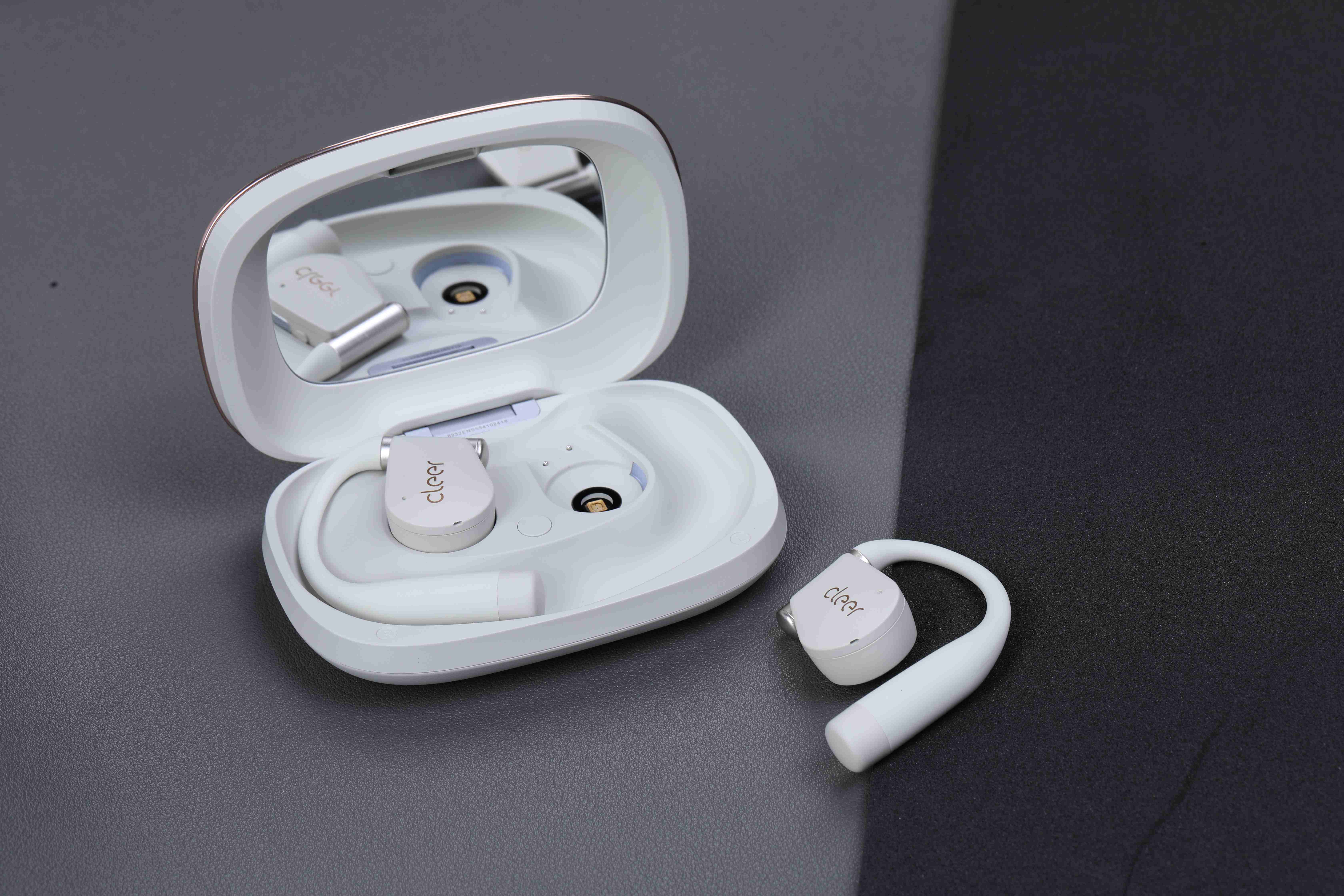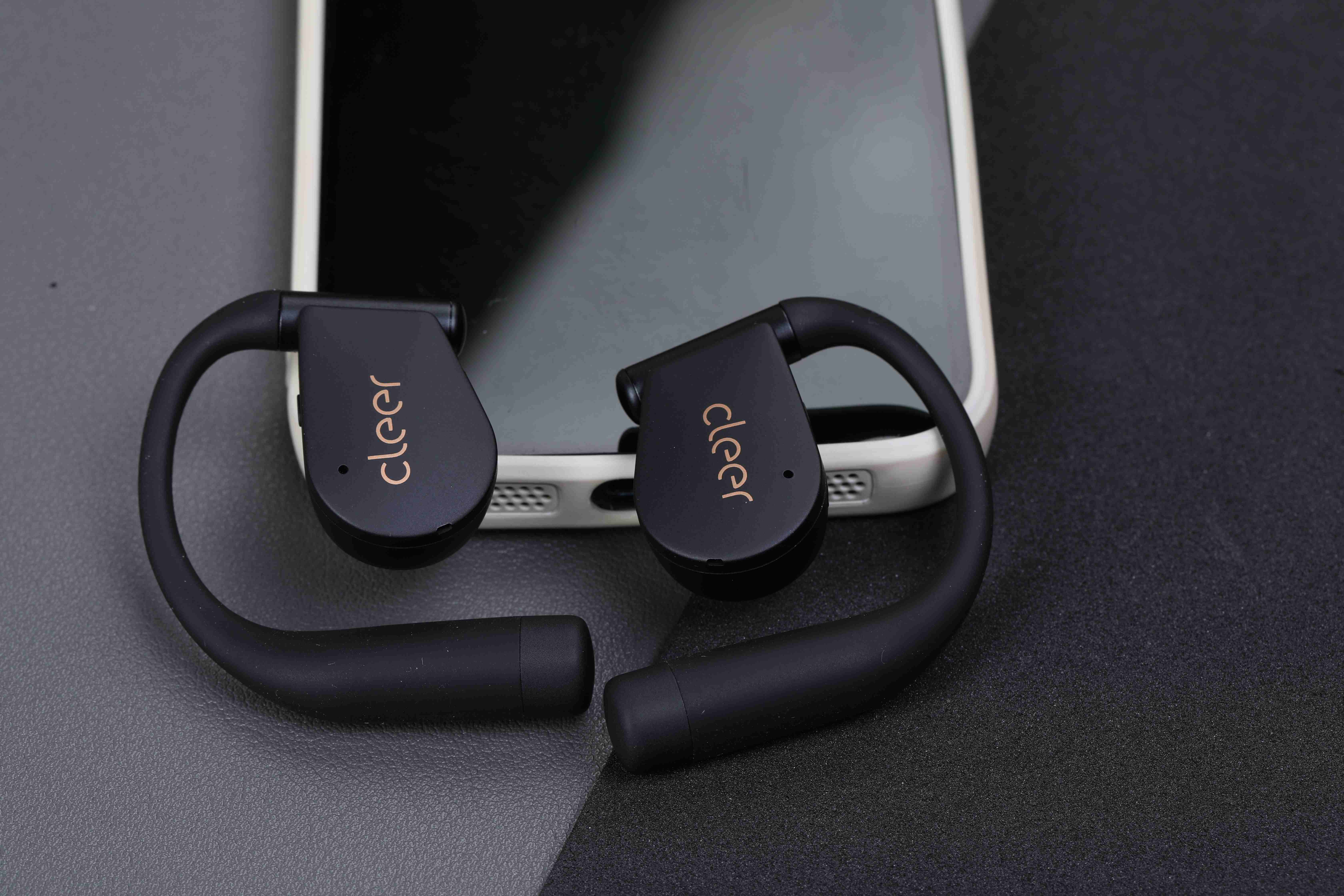2025-10-22 14:37:00
The annual Double 11 is here again.
For digital enthusiasts, this is not just a "hands chopping festival", but more like a "new season of technology" - major brands are showcasing their expertise, with new technologies, categories, and experiences appearing one after another, especially in the headphone market where new breakthroughs and trends can be seen almost every year. Among this year's many new products, the most eye-catching one is Cleer's newly launched ARC 5 Sound Arc Open AI Earphone Noise Reduction Edition.
The reason is simple: this is a product that has truly achieved technological breakthroughs in the popular field of "open earphones".
In the past two years, the popularity of open earphones has skyrocketed. IDC data shows that the global shipment of open earphones in the first half of 2025 increased by 61.1% year-on-year, making it a rising star in the earphone industry from commuting to sports. They do not enter the ear, do not block the ear canal, and do not cause pain or stuffiness when worn for a long time. They allow you to feel the surrounding environment while listening to music, which is comfortable and safe.
Especially for white-collar workers, fitness enthusiasts, and users who wear headphones for a long time, open headphones are undoubtedly more suitable for daily use scenarios - they liberate the ears and change the way listening is done.
But there is one thing that has always been a headache for the industry and a dilemma for users: the noise reduction of open headphones is too difficult.
To understand this issue, we need to first understand the structural logic of open headphones.
Traditional in ear headphones or head mounted headphones rely on "physical enclosure" to achieve initial sound insulation, and then combine electronic noise reduction algorithms to cancel out environmental noise;
Open headphones, on the other hand, are the opposite - they have an open design and the ear canal is not sealed, which means that external noise can easily enter the ear. Open headphones rely on a "non in ear" design to win comfort and safety, but also have naturally weak sound insulation due to the lack of earplugs to seal the ear canal.
So, when manufacturers tried to do active noise reduction on open headphones, the problem arose: in order for the microphone to capture more environmental noise for calculation, the gain (sensitivity) of the microphone must be significantly increased. But once the gain is too high, it will produce a frustrating "whistling" phenomenon - that piercing high-frequency scream that not only affects the experience, but also damages the listening experience.
This cannot be solved simply by adjusting an algorithm or changing a parameter. Traditional noise reduction algorithms are almost helpless in this situation, and in the end, either the noise reduction is ineffective or the noise is loud and explosive.
Therefore, in the entire headphone industry, open headphones have almost become the "noise free zone".
However, Cleer chose to go in the opposite direction and officially debuted on Double 11 with the ARC 5 noise cancelling version. With a high-performance AI chip and a self-developed dynamic filtering algorithm, it announced the arrival of the "noise cancelling era" for open headphones.
As one of the earliest brands in China to produce open headphones, Cleer's ARC 5 noise cancelling version can be said to have made a "groundbreaking" attempt in terms of technology
Its core starts with an independent AI chip. This chip has extremely high computing power and can capture environmental noise signals in real-time at a sampling rate of 768kHz, which is equivalent to analyzing hundreds of thousands of sound wave changes per second. Simply put, it's like equipping headphones with a "millisecond level response tuner" that can "listen" to the surrounding sound hundreds of thousands of times per second, dozens of times faster than human ear response. The key is that it is not yet a crude "one size fits all" blocking of external sounds, but rather an intelligent "discrimination" of which noises should be eliminated and which sounds should be retained. For example, when you are on the subway, it will intelligently weaken low-frequency roars; When you walk on the street, it suppresses wind noise and traffic, but you can still hear pedestrians talking and honking.
Once noise is detected, such as the rumbling sound of a subway station entrance, it immediately calculates "how much frequency and intensity of noise should be cancelled out", dynamically adjusts the parameters of the noise reduction filter, and can achieve a maximum effective noise reduction depth of -15dB while successfully suppressing the most difficult whistling problem of open headphones. This can be said to be a milestone breakthrough in the field of open headphones.
Many people are concerned that "open noise cancellation" will isolate all surrounding sounds like closed headphones, which is actually unsafe. But the Cleer ARC 5 noise cancelling version's "noise cancelling but not soundproofing" design perfectly captures the core advantage of open headphones - which is also what I think is most worth buying.
This kind of auditory sensation is particularly similar to the "smart sharpening" in photography: it does not blur the background, but selectively enhances the subject. You can still feel the presence of crowds and car noises, but those annoying continuous noises are intelligently filtered, and the layers and spatial sense of the music are even more transparent.
Of course, paper parameters do not represent real experience. Truly good headphones not only have beautiful laboratory data, but also need to be stable and easy to use in various real-life scenarios.
Daily commuting by subway and bus is the main battlefield for headphone usage. Although traditional noise cancelling headphones can block out external noise, they also bring a "stuffy feeling" and even safety hazards - they cannot hear subway announcements or train noises. The Cleer ARC 5 noise cancelling version's "open AI noise cancelling" solves this pain point perfectly. Its AI chip and algorithm will automatically adjust the noise reduction depth according to the type of environmental noise, which can significantly weaken low-frequency roaring sounds on the subway and make music purer; But it can automatically amplify the surrounding voice prompts when crossing the road or entering the station, ensuring safety. This balance of "noise reduction without sound insulation" is the true charm of open noise cancelling headphones. Moreover, the open wearing structure does not penetrate the ear at all, and there is no burden to wear it all day long. This "pure auditory freedom" is quite rare.
This year's Double 11, consumers are no longer blindly pursuing a "price war", but are looking for products with higher technological content and smarter experiences. The Cleer ARC 5 noise cancelling version does not add gimmicks to its price, but instead redefines the boundaries of open headphones with the upgraded listening experience brought by AI.
If you are planning to upgrade your daily audio equipment on Double 11, this may be an open AI headset worth experiencing. The new product will be reduced by 180 yuan, and a GaN charging set worth 299 yuan and a fragrance strip gift box worth 99 yuan will also be included. Do you want to personally listen to the "intelligent listening revolution" brought by AI? Let's go to Cleer's official Tiktok studio to listen - good price for a limited time+well selected gifts, and you can never stop surprise!